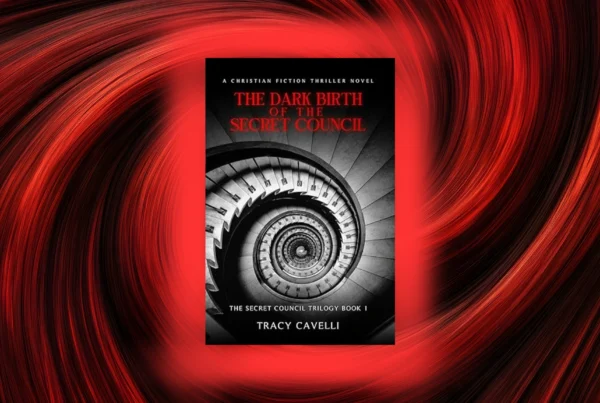The Inner Light and World Religions by Philip T. Nicholson
Philip T. Nicholson wasn’t at a stage of his life where he paid much attention to spiritual matters. He was busy being a dad, a husband and a medical writer. Sure, he had done some seeking as a younger man, but those days were now behind him. But one night, as he lay in bed, exhausted, trying to meditate himself to sleep for a slim few hours before his morning alarm, something strange and life-changing happened. He saw the light.
But not just any light. A bizarre sequence of colorful rings and orbs, diffuse heat lightning, twinkling points of light and exploding raybursts. Accompanying these visions were ecstatic, even erotic, sensations and humming, buzzing noises. Nicholson was simultaneously facinated and terrified. He knew enough about the brain to understand that he was likely having some sort of seizure, one that might get worse if he didn’t try to jolt himself out of it. But he also didn’t want to miss out on what was unfolding into a once-in-a-lifetime spiritual experience, so he stayed on as long as he could bear it.
For weeks afterward, the world was bathed in wonder, a “coating” of meaning and connection. Eventually his curiosity (and a nagging sense of worry) got the best of him — what exactly had happened inside his head that night? Was it a dangerous omen of disease, or a rare and divine gift?
Reverse-Engineering an Experience Through Many Lenses
The Inner Light and World Religions: How Meditating Mystics Use Sleep as a Ladder to Trigger Ecstatic Visions is Nicholson’s play-by-play examination of his experience through many lenses: scientific, spiritual and social. He attempts to “reverse engineer” the series of neurological events that led to the sequence and duration of his visions. He compares his experience to those reported by mystics and holy figures in the Bible, the Quran, the Rig Veda, and numerous other religious and spiritual sources. And he digs deep into the conditions that appear to trigger and intensify such experiences.
We are fortunate that Nicholson is not only an experiencer, but a dogged researcher with existing broad-based knowledge in medicine, philosophy and psychology. These credentials make him uniquely qualified to take a deep dive down the rabbit hole into so many areas of scholarship and cutting-edge science. Add to this Nicholson’s storytelling ability and the poetic flow of his writing and you have a read that captivates as much as it educates, driving the reader forward with insatiable curiosity.
How to Induce Mystical Visions of Light
The Inner Light and World Religions also tackles the many ways people have induced such experiences across time and place: meditation, asceticism, sensory overload, vision quests, and other rituals and regimens. He posits a link to certain types of epileptic seizures, the neurological damage caused by childhood trauma, and the dissociative qualities inherent in some psychiatric disorders.
There are two tools I would recommend using while reading this book. The first, a good anatomical reference of brain structures to help you better envision the neurological maps Nicholson describes. The second, a visit to his website, religiousvisionsoflight.com, to watch video simulations of the visual components of his experience.
Whether you are a true believer or a skeptic, there’s much food for thought in The Inner Light and World Religions. What struck me most was the amount of understanding we are now gaining about the way the brain is wired, and how that wiring affects our perception of reality. Or rather, the way our brain creates that reality. And for me, that opens up a world of possibility just as ecstatic and exhilarating as any mystical experience.
 Author Philip T. Nicholson is a professional medical writer whose research on the neural correlates of meditation-induced light visions has been published in academic journals and medical journals, including The Journal of Neuropsychiatry and Clinical Neuroscience, Medical Hypotheses, The Electronic Journal of Vedic Studies, and The Proceedings of 2006 Harvard-Peking University Conference on Comparative Mythology.
Author Philip T. Nicholson is a professional medical writer whose research on the neural correlates of meditation-induced light visions has been published in academic journals and medical journals, including The Journal of Neuropsychiatry and Clinical Neuroscience, Medical Hypotheses, The Electronic Journal of Vedic Studies, and The Proceedings of 2006 Harvard-Peking University Conference on Comparative Mythology.
He received his undergraduate degree from Princeton (A.B. Philosophy), studied at Stanford Law School (J.D. in Law and Psychiatry), then, after his military service as a Judge Advocate stationed at USAF Headquarters in the Pentagon, he enrolled in a master’s degree program at the Harvard School of Public Health (M.S.P.H.).
Nicholson’s earlier book, Meditation & Light Visions: A Neurological Analysis (2009), presents a detailed technical explanation of how brain mechanisms related to slow wave sleep are responsible for generating the shapes, colors, movements, and timing intervals of the clear light visions that appear during “empty-mind” prayer and meditation. His latest book, The Inner Light and World Religions, demonstrates that these meditation-induced light visions have a universal distribution and that they’ve helped shape the evolution of the world’s major religions.
Buy this Book!
Amazon





